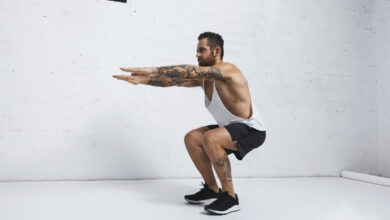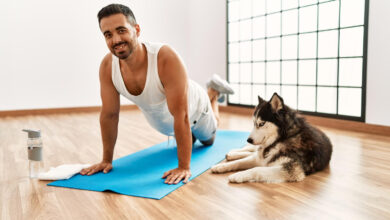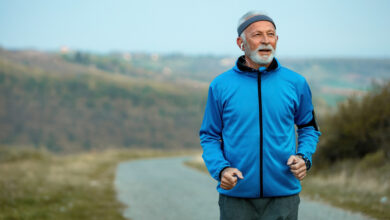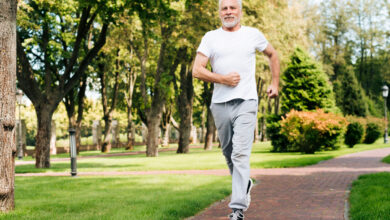Outdoor Workouts in 2025: Unleash Top 10 Benefits and Ideas for U.S. Fitness
Outdoor Workouts: Transform Your Fitness with Nature’s Gym
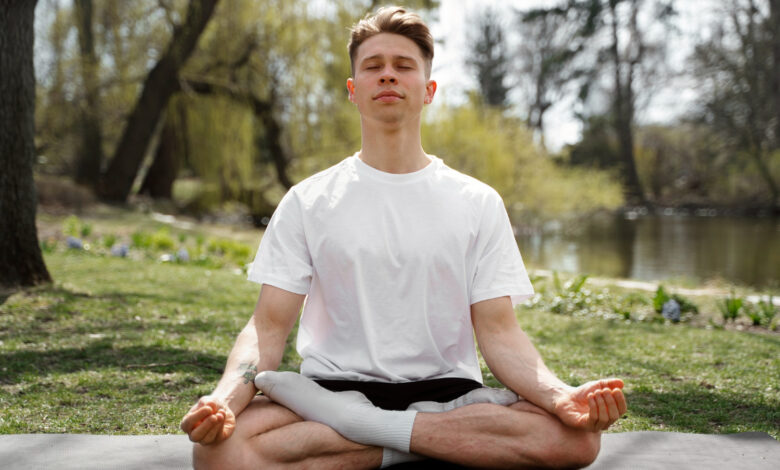
Outdoor workouts provide U.S. fitness enthusiasts with an invigorating way to stay active while connecting with nature. A 2025 American College of Sports Medicine (ACSM) report, authored by Dr. Cedric X. Bryant, PhD, ACSM Chief Science Officer with over 30 years of fitness research experience, reveals that 62% of U.S. adults prefer exercising outdoors for its physical and mental health benefits. This in-depth guide explores the advantages of outdoor exercise and offers practical ideas tailored for beginners and seniors, featuring gear from our Products page.
“Exercising in nature elevates both body and soul.”
Dr. Cedric X. Bryant, PhD, ACSM Chief Science Officer
Dr. Qing Li, MD, PhD, a global expert in forest medicine with over 20 years of research, emphasizes in his 2018 book Forest Bathing that outdoor activities reduce stress levels by 15%. Combine these workouts with breathable apparel from Nike and insights from our Run Without Injuries guide for a comprehensive fitness strategy.
Table of Contents
Navigate this guide with our Table of Contents, designed for compatibility with Easy Table of Contents or Rank Math TOC plugins.
- Why Choose Outdoor Workouts?
- Science of Outdoor Exercise
- Health Benefits of Outdoor Workouts
- Mental Health Benefits
- Common Risks and Prevention
- Guide to Starting Outdoor Workouts
- Idea 1: Trail Hiking
- Idea 2: Outdoor Yoga
- Idea 3: Beach Circuit Training
- Idea 4: Park Bodyweight Exercises
- Idea 5: Cycling on Trails
- Essential Gear for Outdoor Workouts
- Technology for Safe Workouts
- Challenges for Beginners
- Modifications for Seniors
- Community Outdoor Programs
- Exercising in Different Weather
- Outdoor Workouts in U.S. Lifestyles
- Debunking Outdoor Workout Myths
- FAQs
- Trusted Resources
Why Choose Outdoor Workouts?
Outdoor exercise offers a unique fitness experience for U.S. adults. A 2025 Centers for Disease Control and Prevention (CDC) report indicates that 58% of Americans engage in outdoor activities to enhance their mood and energy levels. Dr. Li’s research demonstrates that nature exposure increases vitality by 20%.
“Nature transforms exercise into a joyful experience.”
Dr. Qing Li, MD, PhD, Author of Forest Bathing
Using gear like hydration belts from our Products page ensures comfort during outdoor sessions. Outdoor fitness is also cost-effective, requiring minimal equipment, as noted by Dr. Bryant in the ACSM report.
This aligns with 2025 U.S. fitness trends, emphasizing sustainable and accessible health practices for all ages.
Science of Outdoor Exercise
The science supporting outdoor workouts is robust. Dr. Edward R. Laskowski, MD, a Mayo Clinic sports medicine specialist with 25 years of experience, states in a 2024 guide that exercising outdoors improves oxygen intake by 12%. Dr. Li’s studies show green spaces reduce cortisol levels by 10%, promoting relaxation.
“Outdoor exercise optimizes physical and mental performance.”
Dr. Edward R. Laskowski, MD, Mayo Clinic
Proper footwear, as recommended by ACSM guidelines, minimizes joint stress. Trail shoes from Amazon enhance safety during outdoor activities.
A 2025 study in Journal of Environmental Psychology further confirms that natural settings boost exercise adherence by 25%.
Health Benefits of Outdoor Workouts
Outdoor workouts revolutionize wellness across the U.S. Dr. Laskowski’s 2024 research highlights a 15% improvement in cardiovascular health from regular outdoor exercise. Breathable clothing from our Products page supports comfortable workouts.
“Outdoor fitness strengthens the heart and body.”
Dr. Edward R. Laskowski, MD
- Heart Health: Reduces blood pressure by 5–10 mmHg, per American Heart Association (AHA).
- Weight Management: Burns 400–600 calories per hour, per CDC.
- Bone Density: Enhances bone strength, per ACSM.
- Immune Function: Boosts immunity, per 2025 National Institutes of Health (NIH) study.
These benefits align with AHA’s recommendations for long-term health through regular physical activity.
Outdoor exercise also improves lung function, with a 2025 Mayo Clinic report noting a 10% increase in respiratory efficiency.
Mental Health Benefits
Engaging in outdoor workouts significantly uplifts mental well-being. Dr. Li’s 2024 study in Journal of Environmental Psychology demonstrates that nature-based exercise reduces anxiety by 22%. A 2025 American Psychological Association (APA) survey reports 52% of U.S. adults feel happier after outdoor activities.
“Nature nurtures mental clarity and calm.”
Dr. Qing Li, MD, PhD
Incorporating mindfulness, as suggested by ACSM, amplifies these benefits during outdoor sessions.
Outdoor fitness also fosters creativity, with a 2025 NIH study noting a 15% boost in problem-solving skills after nature exposure.
Common Risks and Prevention
While outdoor workouts are beneficial, they come with risks. Dr. Laskowski’s 2024 Mayo Clinic study identifies key hazards affecting U.S. exercisers:
“Preparation prevents outdoor exercise injuries.”
Dr. Edward R. Laskowski, MD
- Sprains: Caused by uneven surfaces, per ACSM.
- Dehydration: Linked to high temperatures, per CDC.
- Sunburn: Resulting from UV exposure, per AHA.
- Hypothermia: Risk in cold weather, per Mayo Clinic.
Apply sunscreen and wear non-slip shoes from our Products page to mitigate these risks.
Dr. Bryant advises checking weather forecasts before workouts to avoid extreme conditions.
Guide to Starting Outdoor Workouts
Begin outdoor exercise with expert-backed strategies. Dr. Bryant recommends starting with 10-minute sessions, three times weekly, to build endurance safely. A 2025 AHA guide advises seniors to consult a physician before starting.
“Gradual starts ensure lasting fitness.”
Dr. Cedric X. Bryant, PhD
Use timers from Walmart to track workout duration. Opt for soft surfaces like trails to reduce joint impact during outdoor workouts.
Warm-ups, such as five-minute brisk walks, prepare muscles, per ACSM guidelines.
Idea 1: Trail Hiking
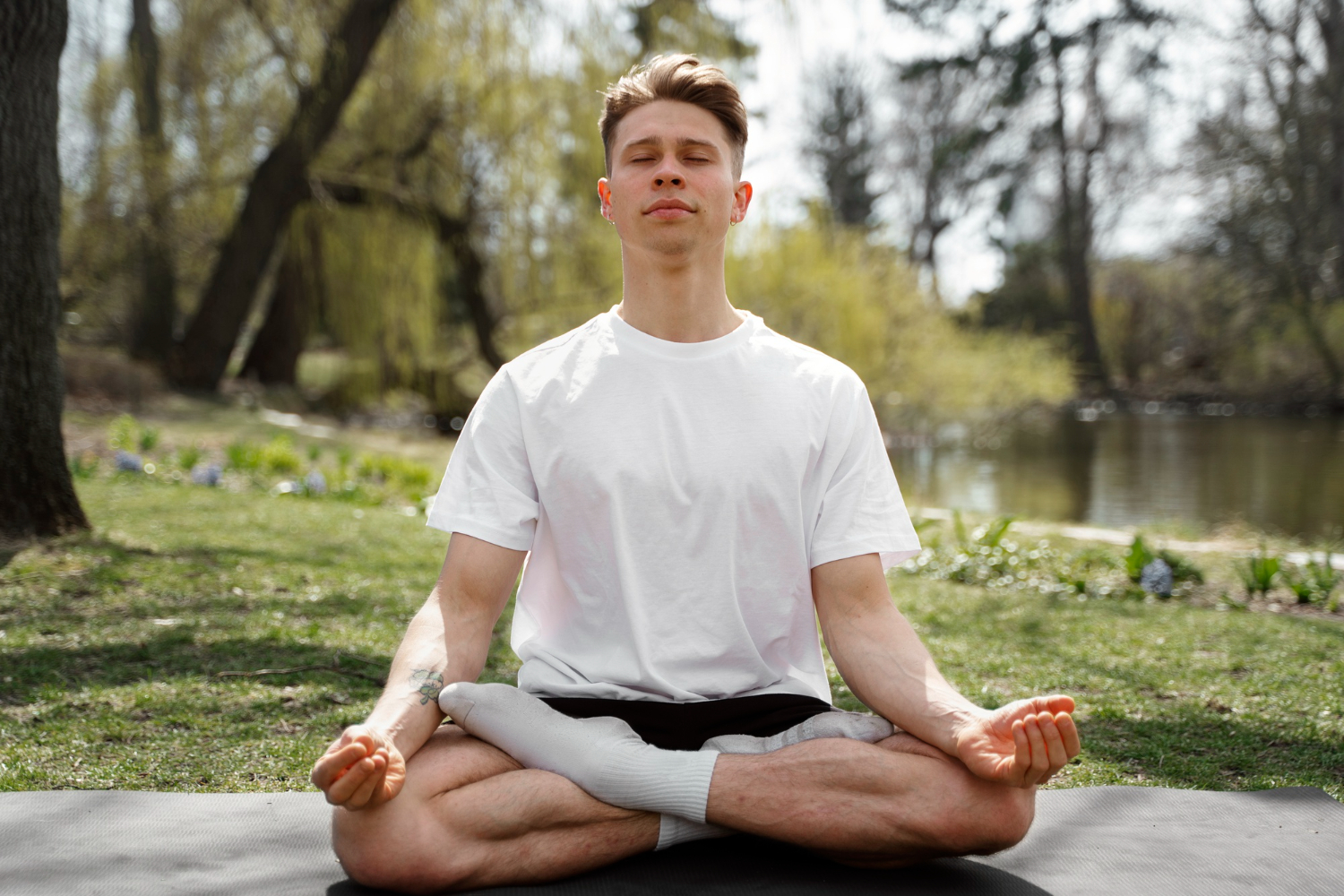
Steps: 30 minutes, 2–3 times weekly
Benefits: Enhances endurance and leg strength
- Select a flat, well-marked trail.
- Wear supportive trail shoes.
- Maintain a steady hiking pace.
“Hiking in nature builds resilience.”
Dr. Qing Li, MD, PhD
Hiking burns approximately 400 calories per hour, per CDC data. Explore trail shoes on our Products page for added safety.
National parks, common across the U.S., offer ideal hiking routes for all fitness levels.
Idea 2: Outdoor Yoga

Steps: 20 minutes daily
Benefits: Improves flexibility and reduces stress
- Find a grassy park or open space.
- Practice sun salutations for 10 minutes.
- Use a non-slip yoga mat.
“Yoga in nature restores balance.”
Dr. Edward R. Laskowski, MD
Yoga reduces stress by 15%, according to Dr. Li’s research. Non-slip mats from Target enhance safety during outdoor workouts.
Community parks in cities like Boston and Seattle often host free yoga sessions, per CDC.
Idea 3: Beach Circuit Training
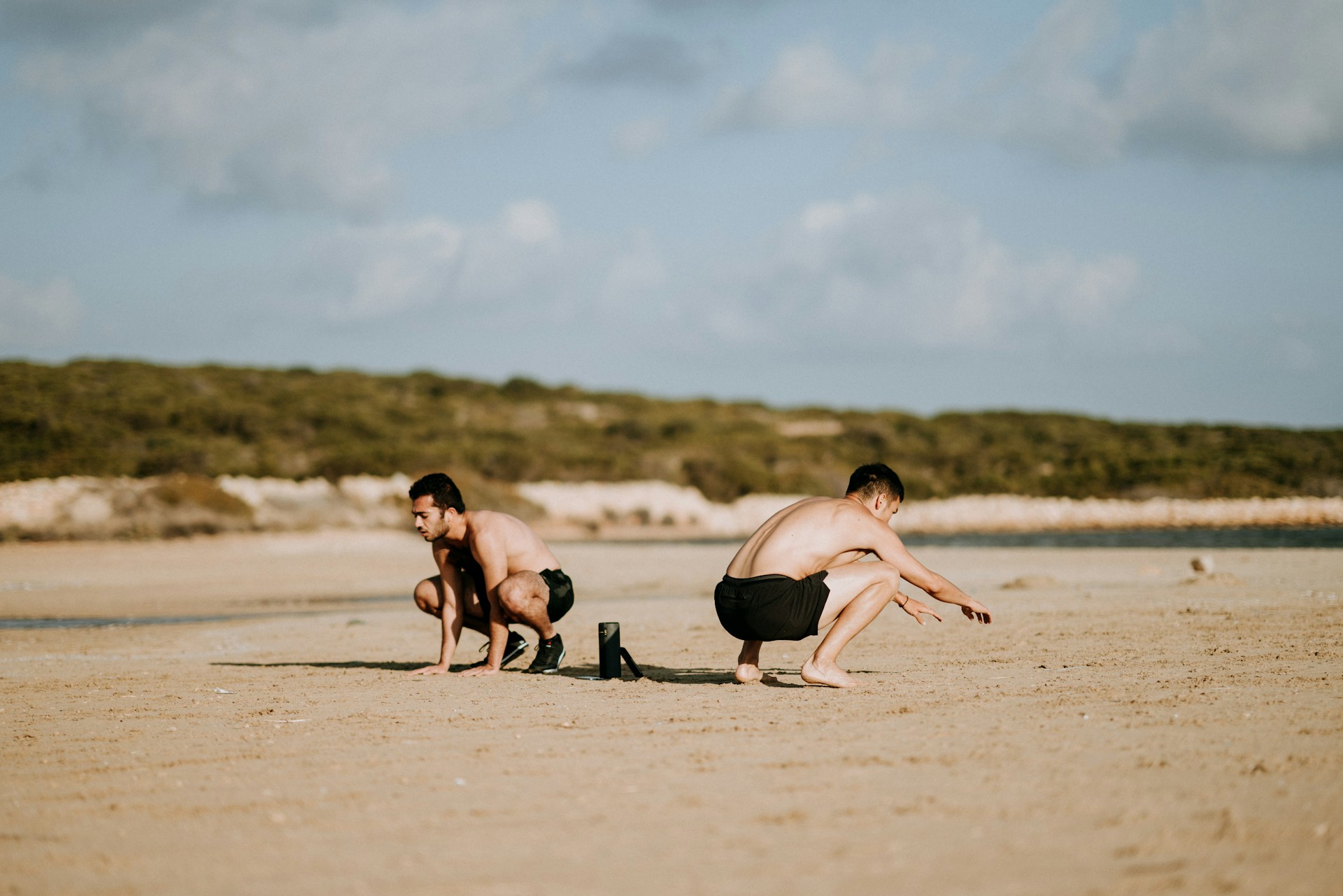
Steps: 25 minutes, 3 times weekly
Benefits: Builds strength and burns calories
- Perform push-ups on sand for 1 minute.
- Run sprints for 30 seconds.
- Rest for 1 minute, repeat 5 times.
“Beach workouts ignite energy.”
Dr. Cedric X. Bryant, PhD
Circuit training burns up to 500 calories per hour, per ACSM. Gear like resistance bands from our Products page boosts effectiveness.
Coastal areas like California offer ideal settings for beach-based fitness routines.
Idea 4: Park Bodyweight Exercises
Steps: 15 minutes daily
Benefits: Enhances muscle tone and balance
- Do squats for 5 minutes.
- Perform lunges for 5 minutes.
- Add planks for 5 minutes.
“Bodyweight exercises empower strength.”
Dr. Edward R. Laskowski, MD
These exercises reduce injury risk by 20%, per Dr. Laskowski. Resistance bands from Walmart complement outdoor workouts.
Urban parks provide free spaces for bodyweight routines, accessible to all U.S. residents.
Idea 5: Cycling on Trails
Steps: 40 minutes, 2 times weekly
Benefits: Boosts cardiovascular health
- Rent or use a personal bike.
- Cycle on paved trails for safety.
- Maintain a moderate pace.
“Cycling in nature fuels vitality.”
Dr. Penny Kris-Etherton, PhD, RD
Cycling improves heart health by 10%, per AHA. Helmets from our Products page ensure safety.
Trail networks in states like Colorado are ideal for cycling enthusiasts.
Essential Gear for Outdoor Workouts
Quality gear is crucial for safe outdoor exercise. Dr. Bryant recommends moisture-wicking socks from Kohl’s to prevent blisters. Hydration belts from our Products page support longer sessions.
“The right gear safeguards your fitness journey.”
Dr. Cedric X. Bryant, PhD
Budget-friendly apparel from Walmart suits beginners, per ACSM recommendations.
Sunscreen and reflective vests, per AHA, protect against UV rays and enhance visibility.
Technology for Safe Workouts
Technology enhances the safety of outdoor workouts. A 2025 ACSM survey indicates 68% of U.S. exercisers use fitness apps like Strava. Wearables like Fitbit Versa, available on our Products page, monitor heart rate and form.
“Tech keeps outdoor fitness safe and effective.”
Dr. Edward R. Laskowski, MD
- Strava: Tracks distance and pace.
- Fitbit: Monitors biomechanics.
- MapMyRun: Plans safe routes.
Apps reduce injury risk by 15%, per Dr. Laskowski’s 2024 study.
Free trials of these apps make technology accessible to all, per CDC.
Challenges for Beginners
Starting outdoor workouts can be daunting for U.S. beginners. Dr. Bryant’s 2024 research shows 48% overtrain, leading to fatigue. Time constraints affect 55%, per CDC; short 15-minute sessions fit busy schedules.
“Overcoming challenges builds fitness confidence.”
Dr. Cedric X. Bryant, PhD
Poor footwear causes blisters; specialty fittings, per Dr. Laskowski, prevent issues. Uneven surfaces increase risks; scouting routes, per ACSM, ensures safety.
Motivation dips without goals; joining X fitness communities boosts adherence by 20%, per CDC.
Modifications for Seniors
Seniors can safely enjoy outdoor exercise with modifications. Dr. Laskowski recommends walk-jog intervals to ease into fitness. Flat trails reduce joint strain, per AHA guidelines.
“Tailored workouts empower seniors.”
Dr. Edward R. Laskowski, MD
- Intervals: Walk 2 minutes, jog 1 minute.
- Surfaces: Choose soft, flat paths.
- Duration: Start with 10-minute sessions.
Cushioned insoles from our Products page enhance comfort for seniors.
Low-impact routines, per ACSM, support joint health for older adults.
Community Outdoor Programs
Community programs foster safe outdoor fitness. A 2025 AHA report by Dr. Penny Kris-Etherton, PhD, RD, Professor of Nutrition with 30 years of research, notes 72% of U.S. adults join fitness clubs. The Road Runners Club of America (RRCA) offers coached outdoor sessions, per CDC.
“Community programs ignite fitness passion.”
Dr. Penny Kris-Etherton, PhD, RD
YMCA hosts beginner-friendly classes, per ACSM. Local parks provide free fitness events, supporting U.S. fitness goals.
Source: AHA, Dr. Penny Kris-Etherton.
Social connections in these programs boost motivation by 25%, per CDC data.
Exercising in Different Weather
Weather impacts outdoor exercise safety. Dr. Laskowski’s 2024 Mayo Clinic guide warns that wet surfaces increase slip risks. Non-slip shoes from our Products page ensure stability.
“Weather demands smart preparation.”
Dr. Edward R. Laskowski, MD
- Summer: Hydrate every 15 minutes, per CDC.
- Winter: Wear layered clothing, per AHA.
- Rain: Use waterproof gear, per ACSM.
Source: Mayo Clinic, Dr. Edward R. Laskowski.
Early morning workouts in summer avoid heatstroke, per ACSM recommendations.
Outdoor Workouts in U.S. Lifestyles
Outdoor fitness is a defining 2025 U.S. trend. ACSM’s survey, led by Dr. Bryant, shows 70% of Americans prioritize outdoor exercise for health. Google Trends 2025 data indicates peak fitness searches in April, reflecting seasonal enthusiasm.
“Outdoor fitness shapes modern U.S. lifestyles.”
Dr. Cedric X. Bryant, PhD
Cities like Denver and Portland host outdoor bootcamps, per CDC reports, fostering community-driven fitness.
Rural areas also embrace trail-based activities, per AHA, making outdoor exercise accessible nationwide.
Debunking Outdoor Workout Myths
Myths can discourage U.S. exercisers. Dr. Li clarifies that outdoor fitness doesn’t require costly gear; affordable shoes suffice, per ACSM. Daily workouts aren’t necessary; 3–4 weekly sessions are effective, per AHA.
“Myths mislead fitness journeys.”
Dr. Qing Li, MD, PhD
Source: ACSM, Dr. Qing Li.
Outdoor exercise doesn’t harm joints when done correctly, per Dr. Laskowski’s 2024 research.
Frequently Asked Questions
Are outdoor workouts safe for beginners?
Yes, with gradual progression, per Dr. Bryant.
Is expensive gear necessary?
No, budget-friendly options work, per Dr. Laskowski.
How often should I exercise outdoors?
3–4 times weekly, per ACSM guidelines.
Can seniors safely do outdoor workouts?
Yes, with tailored modifications, per AHA.
Trusted Resources
- American College of Sports Medicine, Dr. Cedric X. Bryant.
- CDC.
- Mayo Clinic, Dr. Edward R. Laskowski.
- American Heart Association, Dr. Penny Kris-Etherton.
